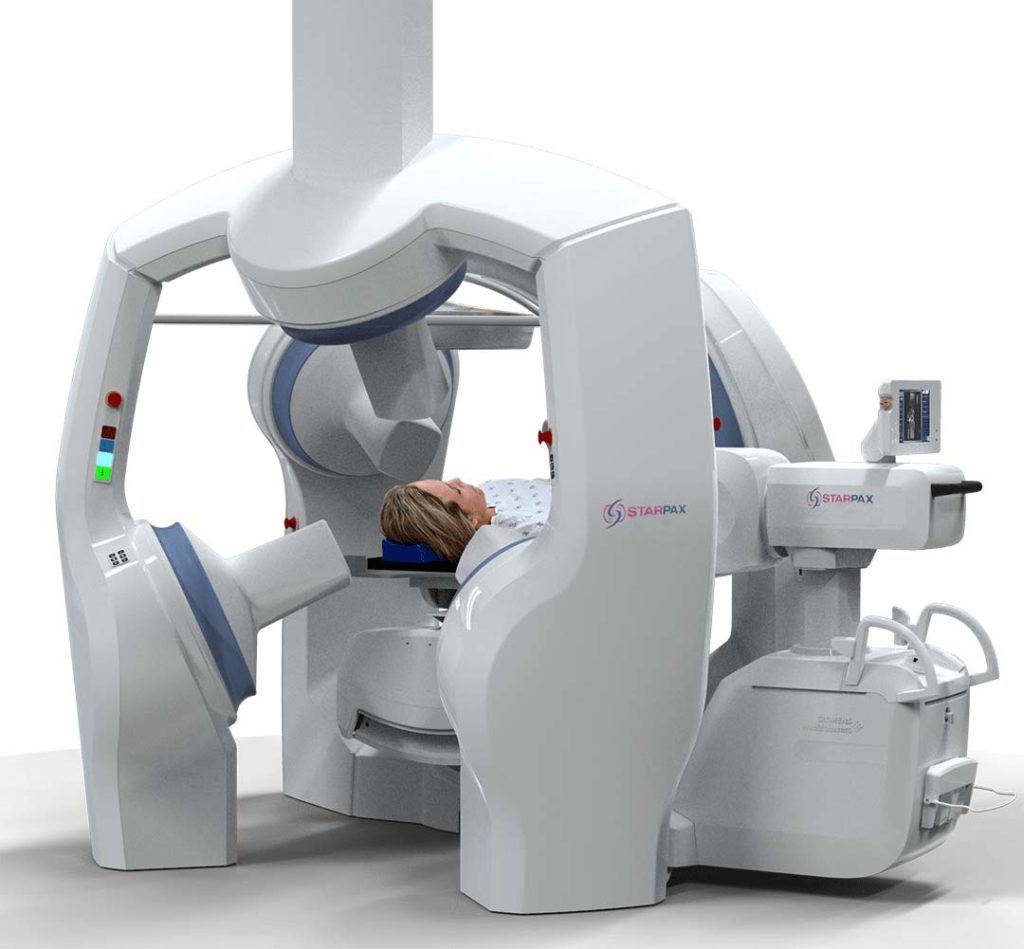Menu
Starpax offers a solution to challenges in current cancer treatments that have persisted for more than a century.
- 100% REMISSION RATE
- NO SIGNIFIcANT SIDE EFFECTS OBSERVED
- THE ANTICANCER DRUG IS DIFFUSED IN THE WHOLE VOLUME OF THE TUMOR
- IT ACCUMULATES in the HYPOXIC ZONES
- Based on preclinical trials
All results, assertions, deductions and technico-scientifc or medical forward-looking claims made by Starpax in this document are based either on independent third party preclinical work conducted at reputable Canadian First-tier research institutions, GLP certified labs, clinical research organization, papers from the scientific literature or by design intended use of the technology on humans. The Starpax technology is currently an investigational product and is not yet approved for commercial use.
THE ChalLenges of curing CANCER
The 4 biggest challenges in beating cancer
- 1Reach the tumor
- 2Distribute the drug in the whole volume of the tumor
- 3Reach the hypoxic zones and attack the cancer stem cells
- 4Avoid the side effects
1 Reach the tumor
Challenge
- Scientific investigations conducted worldwide have shown that only 0.001% of an injected dose of traditional systemic chemotherapy and only 0.7% of modern drugs, nano-carriers, antibody-drug conjugates, etc. administered through systemic injection reach the tumor.
- This is because during tumor formation, cancer cells reproduce rapidly and consume most of the oxygen around them, forming shields called “hypoxic zones.” Studies have demonstrated that hypoxia causes slow-proliferating stem-cell-like phenotype of cells, decreases senescence, and creates chaotic and malfunctioning blood and lymphatic vessels. When blood vessels are impaired, the injected drugs barely reach the interior of the tumor because the vessels used to deliver the drugs are seriously damaged. The interstitial pressure in the tumor is higher than the pressure in the tumor blood capillaries, which restricts drugs from getting inside the tumor through the vessels.
Solution
- The Starpax Magnetodrones ( Bn1-S™ bacterium transporting the drug on its surface) do not need blood vessels to travel inside the tumor. They are self-propelled and they easily swim in the interstitial spaces of the tumoral tissues. Since the injection is made directly into the tumor without going through the blood vessels, analyses have shown that 100% of the dose reaches the inside of the tumor. That means that even if the total Starpax dose injected is smaller than in traditional chemotherapy, there is 3,500 times more drug inside the tumor than with a traditional chemotherapy and 50 times more drug in the tumor than with modern anti-cancer agents injection.
2 Distribute the drug in the whole volume of the tumor
Challenge
- Several scientific studies have shown that only 10% of the tumor volume receives drugs and the rest of the tumor receives little or no drug during systemic administration of anti-cancer therapeutic agents because their diffusion throughout the volume of the tumor is restricted by the deterioration of the blood vessels, which become dysfunctional.
Solution
- The Starpax Magnetodrones™ swim inside the spaces of the tumoral tissues without going in the blood vessels. They are magnetotactic, which means that they are sensitive to the very specific magnetic fields created by the Starpax PolarTrak®, in which the patient is installed. The PolarTrak generates unique magnetic fields and uses artificial intelligence to control the direction of the Magnetodrones with millimetric precision and to guide them in 3D (turn right, turn left, go up, go down) so that they distribute throughout the volume of the tumor spreading drugs that attack cancers cells along their path.
3 Reach the hypoxic zones and attack the cancer stem cells
Challenge
- Hypoxic zones in the tumor have extremely low levels of oxygen and contain cancer stem-like cells that are the source of metastasis in the patient’s body. There are no blood vessels to transport a systemic drug into them. Multiple scientific studies have demonstrated that systemic chemotherapy and immunotherapy are ineffective in hypoxic zones. Radiation therapy needs oxygen to be effective at destroying cancer cells, and studies have shown that radiation therapy is less effective in hypoxic zones, where oxygen is nearly absent.
Solution
- The unique Starpax aerotactic Bn1-S™ bacteria, which form the Magnetodrones, have been developed in our laboratories. They swim with the drug attached to their surface, toward hypoxic zones because the oxygen level is the same as their culture medium. They navigate around obstacles and stop swimming when they cross a hypoxic zone, taking refuge in it and distributing the drug effectively to the cancer stem-like cells.
4 Avoid side effects
Challenge
- It is documented for systemic treatments like chemotherapy, that approximately 99% of a systemic dose injected in the bloodstream does not go into the tumor but instead circulates in the patient’s body causing toxicity, infection or organ damage, as well as often generating more cancer in the future. Radiation therapy, surgery and immunotherapy also have their share of documented side effects that can be detrimental to the patient’s body.
Solution
- Starpax Magnetodrones™ do not circulate in the blood system. They are injected directly into the tumor while the Starpax PolarTrak® guidance technology creates a magnetic sphere around the tumor conceived to keep them captive inside the tumor in order to prevent the exposure of the drug to the rest of the patient’s body, thereby avoiding side effects. Moreover, the Magnetodrones™ are too big to enter in the capillaries to circulate in the blood network throughout the patient’s body. Calculation of the Starpax dose shows a distribution of 800 times fewer toxic molecules in the body than a reference systemic chemotherapy. The Bn1-S™ bacterium is non-pathogenic and dies within 60 minutes after injection.
Independent analysis report
‘’ No side effect on 100% of the animals, no inflammation and pathological changes in their liver, kidney nor heart tissues…’’, and ‘’The Starpax Bn1-S™ triggers the immune system via “deep infiltration” of the white blood cells, T-cells and macrophage in the tumor.’’
Dr. Danuta Radzioch
Senior Scientist, RI-MUHC, Glen site
Professor, Department of Medicine,
Division of Experimental Medicine (Immunology, cancer)
Senior Scientist, RI-MUHC, Glen site
Professor, Department of Medicine,
Division of Experimental Medicine (Immunology, cancer)

5 Make it less expensive for the payors:
Challenge
- New cancer treatments are expensive for the payors. The prices of new approved drugs are skyrocketing, and many treatments generate serious side effects that must be managed and add to the cost of post-cancer treatments, often surpassing the cost of the cancer treatment itself. The costs of treating cancers classified as unmet medical needs mostly in stage 3 or 4 are exorbitant and often unaffordable for most patients.
Solution

- The Starpax Magnetodrones™ can deliver very highly effective drugs that are already FDA approved and are less expensive because their patent has already expired, significantly reducing the cost to payors. Additionallly, the avoidance of major side effects may substantially reduces the cost of post-cancer treatments for the payors.
THE STARPAX MAGNETODRONES™
These consist of a unique proprietary self-propelled bacterium (Bn1-S™) that is sensitive to magnetic fields and that transport liposomes loaded with drugs attached to their surface.
- The bacterium is the result of 22 years of development in laboratories. It is non-pathogenic and dies within 60 minutes after the injection.
- The Bn1-S is one of the smallest bacterium and it can swim in the interstitial spaces of the tumoral tissues without circulating in the blood vessels; while releasing the drug along its path.
- During the treatment, Magnetodrones that are near hypoxic zones take refuge inside the hypoxic zones because the low level of oxygen is the same as their culture medium.

Intra-tumoral Injection
Due to the specific characteristics of the Magnetodrones™, Starpax co-investigators, who have conducted human intra-tumoral injection clinical trials for 15 years, have determined that the Magnetodrones™ are suitable for intra-tumoral injection while avoiding extravasation and intravasation.

THE POLARTRAK™
The POLARTRAK® is a unique patented Starpax medical device in which the patient is installed.
- Conceived to generate a magnetic sphere around the tumor to keep the Magnetodrones captive inside it, preventing them from circulating outside it aiming to substantially avoiding the side effects. At the same time, the POLARTRAK® creates virtual mono-pole magnetic field vectors directed from the perimeter of the tumor toward a focal point of convergence in the tumor.
- The POLARTRAK® is then controlled by its Artificial Intelligence to move this focal point throughout the volume of the tumor in order to force the Magnetodrones, which are sensitive to these specific magnetic vectors, to spread throughout the tumor volume while releasing the drug along their path.

How it works

THREE THERAPEUTIC BENEFITS IN THE SAME TREATMENT
1.THREE THERAPEUTIC BENEFITS IN THE SAME TREATMENT: The bacteria loaded with the drug stay inside the tumor.
The PolarTrak is designed to precisely force the bacteria loaded with the drug to distribute in 3D throughout the volume of the tumor without circulating in the bloodstream, offering 3,500 times more drug inside the tumor than traditional chemotherapy. The PolarTrak creates a “magnetic sphere” around the tumor to contain them inside the tumor. This prevents the drug from circulating in the rest of the patient’s body, thereby preventing side effects.
2. HYPOXIC ZONE TREATMENT: The bacteria loaded with the drug accumulate in the hypoxic regions.
Preclinical studies demonstrated that the Starpax Bn1-S™ bacteria fill the whole volume of the tumor, while accumulating in the hypoxic regions, and attack cancer cells, including the ones in the “low oxygen” hypoxic zones.
WHY HYPOXIC REGIONS MATTER:
“Hypoxia causes slow-proliferating stem-cell-like phenotype of cells, decreases senescence, creates chaotic and malfunctioning blood vessels, which further induces therapy resistance.”
(The role of hypoxia in cancer progression. Barbara Muzz, Pilar de la Puente, Feda Azab, Abdell Kareem Azab, 2015)
The lack of blood vessels or their malfunction in the tumor greatly limits drug diffusion. The Bn1-S swim toward hypoxic zones where the oxygen level is the same as their culture medium. They circumvent obstacles, penetrate into hypoxic areas and distribute their drug effectively to the cancer stem-like cells.
3. SYSTEMIC IMMUNOTHERAPY: The Bn1-S™ bacteria trigger an immune response.
Third-party preclinical studies of human cancer tumors grown in mice have shown that the Starpax Bn1-S™ accumulate the hypoxic region and that the treatment triggers the immune system with “deep infiltration” of the white blood cells (T-cells, NK cells, and macrophages) in the tumor. Studies have also shown that Bn1-S injected into the tumors alone without drugs generate significant tumor regression acting as an immunostimulant. Based on literature and preclinical results, it is expected that the Starpax treatment will cause a systemic immune response to attack floating cancer cells and remote metastases, without any drug circulating in the rest of the body.

